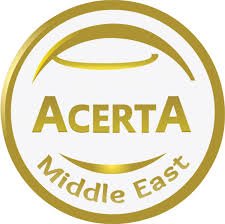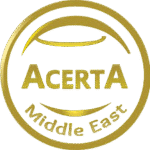In industries like oil and gas, chemicals, and offshore operations, where major accident hazards (MAHs) like fires, explosions, or toxic releases are ever-present risks, the ability to safely escape, evacuate, and rescue personnel is critical. Escape, Evacuation, and Rescue (EER) planning is a cornerstone of safety management, designed to protect lives during emergencies. This process involves preparing for worst-case scenarios, ensuring workers can escape danger, evacuate facilities, and be rescued efficiently. This article explores the principles, components, and practical steps of EER, with insights into how
Cormat Group implements robust strategies to safeguard personnel in high-hazard environments.
What is Escape, Evacuation, and Rescue (EER)?
Escape, Evacuation, and Rescue (EER) refers to the systematic planning and implementation of procedures to enable personnel to safely exit a facility during an emergency, relocate to a safe area, and, if necessary, be rescued from hazardous conditions. EER is a critical component of safety management systems in industries regulated by frameworks like the UK’s Control of Major Accident Hazards (COMAH) or Offshore Safety Case Regulations. It ensures that workers can respond effectively to incidents such as fires, gas leaks, or structural failures.
- Escape involves individuals moving from a hazardous area to a safe location within the facility, such as a muster point or temporary refuge.
- Evacuation is the organized movement of personnel from the facility to a safer external location, often using lifeboats, helicopters, or designated routes.
- Rescue encompasses the recovery of personnel who are trapped, injured, or unable to evacuate, often requiring external assistance like emergency services.
For example, on an offshore oil platform, EER planning might include escape routes to a muster point, evacuation via lifeboats, and rescue by coastguard helicopters. The goal is to minimize harm and ensure everyone reaches safety, even in the most challenging scenarios.
Why is EER Important?
EER is vital for protecting lives and ensuring compliance in high-hazard industries. Its key benefits include:
- Life Safety: EER ensures personnel can escape and evacuate safely, reducing the risk of injury or fatality during emergencies.
- Regulatory Compliance: Regulations like COMAH and offshore safety directives require robust EER plans, with documented procedures and regular drills.
- Operational Continuity: Effective EER minimizes disruptions by enabling swift, organized responses to incidents, reducing downtime.
- Community Protection: Off-site evacuation plans protect nearby communities from incidents with wider impacts, such as toxic gas releases.
- Reputation and Trust: Cormat Group builds confidence among employees, regulators, and stakeholders by prioritizing EER, demonstrating a commitment to safety.
A 2023 study by the Health and Safety Executive (HSE) found that facilities with comprehensive EER plans reduced evacuation times by 50% during simulated emergencies, highlighting their critical role in safety.
Key Components of EER
EER planning is built on several interconnected elements that ensure a coordinated and effective response to emergencies:
1. Escape Routes
Clearly defined, unobstructed routes allow personnel to move from hazardous areas to safe zones, such as muster points or temporary refuges. Routes must be well-marked, accessible, and designed to handle worst-case scenarios.
2. Muster Points and Temporary Refuges
Muster points are designated safe areas within a facility where personnel gather during an emergency. Temporary refuges, common in offshore facilities, provide short-term protection from hazards like fires or explosions.
3. Evacuation Procedures
These outline how personnel exit the facility, using methods like lifeboats, helicopters, or pedestrian routes. Procedures must account for different scenarios, such as power outages or extreme weather.
4. Rescue Plans
Rescue plans detail how to recover personnel who are trapped, injured, or unable to evacuate. This may involve on-site teams, external emergency services, or specialized equipment like stretchers or breathing apparatus.
5. Emergency Communication
Effective communication systems, such as alarms, radios, or public address systems, ensure personnel receive clear instructions during an emergency. Backup systems are critical for reliability.
6. Training and Drills
Regular training and drills prepare personnel for EER procedures, ensuring they can act quickly and confidently. Drills simulate realistic scenarios, like fires or gas leaks, to test preparedness.
7. Coordination with External Services
EER plans include coordination with external responders, such as fire services, coastguards, or medical teams, to ensure seamless rescue operations.
8. ALARP Demonstration
EER plans must demonstrate that risks to personnel during escape, evacuation, and rescue are reduced to As Low As Reasonably Practicable (ALARP), aligning with regulatory requirements.
The EER Planning Process
Developing an effective EER plan requires careful planning, collaboration, and testing. Here’s a step-by-step guide:
Step 1: Conduct a Risk Assessment
Identify potential MAHs, such as fires, explosions, or toxic releases, using tools like Quantitative Risk Analysis (QRA) or Flammable and Toxic Dispersion Analysis. Assess their impact on escape, evacuation, and rescue. For example, a gas leak might block primary escape routes, requiring alternative pathways.
Step 2: Map Escape Routes
Design clear, unobstructed escape routes to safe areas like muster points or temporary refuges. Consider:
- Accessibility for all personnel, including those with disabilities.
- Protection from hazards, such as heat-resistant materials in fire-prone areas.
- Signage and lighting for visibility in low-light or smoky conditions.
Step 3: Define Muster Points and Refuges
Identify safe muster points or temporary refuges, ensuring they are:
- Protected from hazards (e.g., blast-resistant refuges on offshore platforms).
- Equipped with emergency supplies, like first aid kits or breathing apparatus.
- Capable of accommodating all personnel.
Step 4: Develop Evacuation Procedures
Create procedures for evacuating the facility, tailored to different scenarios. For example:
- Onshore Facilities: Use pedestrian routes or vehicles to exit the site.
- Offshore Platforms: Deploy lifeboats, life rafts, or helicopters.
Ensure procedures account for challenges like adverse weather or equipment failures.
Step 5: Plan Rescue Operations
Develop rescue plans for personnel who cannot evacuate, including:
- On-site rescue teams trained in first aid or confined space rescue.
- Equipment like stretchers, ropes, or breathing apparatus.
- Coordination with external services, such as coastguards or fire brigades.
Step 6: Establish Communication Systems
Implement reliable communication systems, such as:
- Alarms to signal emergencies.
- Radios or intercoms for coordination.
- Backup systems, like satellite phones, for power outages.
Test systems regularly to ensure functionality.
Step 7: Train Personnel
Provide regular training on EER procedures, covering:
- Escape route navigation.
- Evacuation protocols, such as lifeboat deployment.
- Use of emergency equipment, like life vests or respirators.
Conduct drills to simulate realistic scenarios, ensuring personnel are prepared.
Step 8: Coordinate with External Services
Engage with external responders, such as fire services or medical teams, to align EER plans. Share site layouts, hazard data, and communication protocols to ensure seamless collaboration.
Step 9: Demonstrate ALARP
Show that EER risks are reduced to ALARP by:
- Evaluating the effectiveness of escape routes, evacuation methods, and rescue plans.
- Conducting cost-benefit analyses of additional measures, like more lifeboats.
- Comparing plans to industry standards or regulatory requirements.
Step 10: Document and Validate
Document the EER plan in a clear, accessible format, detailing routes, procedures, and responsibilities. Validate it with stakeholders, including employees, safety teams, and regulators, to ensure accuracy and compliance.
Step 11: Conduct Drills and Tests
Regularly test EER plans through drills, simulating scenarios like fires or gas leaks. Evaluate performance, identify gaps, and update plans accordingly.
Step 12: Review and Update
Treat the EER plan as a living document. Review it regularly to reflect changes in operations, regulations, or lessons from incidents.
Cormat Group follows this process to ensure their EER plans are robust and effective.
Conclusion
Escape, Evacuation, and Rescue (EER) planning is a critical component of safety in high-hazard industries. By designing robust escape routes, evacuation procedures, and rescue plans, EER ensures personnel can respond effectively to emergencies, protecting lives and meeting regulatory requirements.
Cormat Group demonstrates how a disciplined EER process drives safety excellence, minimizing risks in complex environments. Despite challenges like dynamic hazards and resource demands, technology, training, and regular updates can overcome them. As industries evolve, EER will remain essential for building safer, more resilient workplaces, ensuring everyone returns home safely.


